About the authors
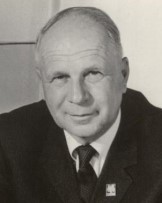
Arkady Aleksandrovich Sludsky
(1912-1978)He was a Doctor of Biological Sciences, Professor, Corresponding Member of the Academy of Sciences of the Kazakh SSR, laureate of the State Prize of the USSR and the Kazakh SSR (fig. 27). The leading theriologist of Kazakhstan, the creator of the Kazakhstani School of Terriologists and Laboratory of Theriology at the Institute of Zoology of the Academy of Sciences of the Kazakh SSR, which he headed until his death. In 1967-1971 he was Director of the Institute of Zoology. Arkady Alexandrovich was the pioneer, principal author and editor of the four-volume (in 8 editions) faunal report entitled the «Mammals of Kazakhstan» (1969-1985), which won the Moscow Society of Nature Testers Award [9]. Arkady Alexandrovich devoted his entire creative life to the study and rational use of commercial mammals in Kazakhstan. His name is associated primarily with the acclimatization of the muskrat in Kazakhstan, with studies of saiga, gazelle, and the wild boar. He is the author of the book entitled «Fur Animals of Kazakhstan» (1939) and the compiler of the polar tutorial about the tiger - «Lord of the Jungle» (1966). Arkady Alexandrovich was the initiator of the establishment of the Red Book of Kazakhstan and its first editor [9]. A.A. Sludsky since his student years spent a lot of time on expeditions around Siberia and Kazakhstan. More than 27 carcasses of various vertebrates of Kazakhstan were presented by him to the Museum’s fund, and in the mid-1970s he donated a family heirloom – a collection of eggs in the amount of 1,163 pieces.
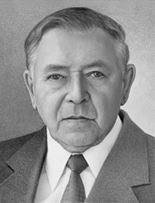
Maxim Dmitrievich Zverev
(1896-1996)He was a Zoologist, Candidate of Biological Sciences, a famous naturalist writer, who was awarded the honorary title of the «People's Writer of Kazakhstan» (fig. 26). He graduated from the Biological faculty of Tomsk University. He headed the Department of Vertebrate Animals at the Siberian Institute for Plant Protection (Novosibirsk), and participated in the creation of its branches in Irkutsk and Krasnoyarsk. He organized the Novosibirsk Zoological Garden and the first Yunnat Station in Siberia. During the first 25 years of his activity he studied the fauna and economic importance of birds and animals in Eastern, Middle and Western Siberia, and in 1937 he moved to Kazakhstan and became one of the organizers of the Almaty Zoo, where for several years he had been heading the scientific division, then the scientific division of the Almaty Reserve [9]. The collection of the 71 bird carcasses, mainly from his Siberian collections in the 1920s, is kept in the fund of the Biological Museum. Among which are also bird carcasses collected in the summer of 1921 in the Semipalatinsk region during an expedition organized by the Tomsk Ornithological Society.
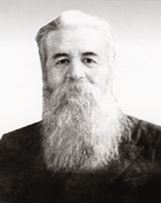
Владимир Николаевич Шнитников
(1873-1957)He was the Corresponding Member of the USSR Academy of Sciences, Professor, an outstanding researcher of nature and the animal world of Semirechye (fig. 25). Author of the major monographs «Birds of the Seven Rivers» (1949), «Mammals of the Seven Rivers» (1936, 1949) and a number of popular science books. In the name of V.N. Schnitnikov there were named two glaciers in the Dzungarian and Trans-Ili Alatau ranges. V.N. Schnitnikov had studied Semirechye most of his life – for about 45 years. In collaboration with M.A. Menzbir he described the subspecies of saxaul jay, Endemic for Semirechye, Podoces panderi ilensis Menzbir & Schnitnikov, 1915 [9]. Vladimir Nikolaevich arrived in Kazakhstan in 1907, and until 1922, he worked first as an agronomist in the Semirechensky resettlement district, and then as a Head of Soil-Botanical Expeditions of the Land Improvement Department of the Ministry of Agriculture. Later, on his initiative, the Semirechensky Department of the Russian Geographical Society was created, where he had worked as a Chairman for a number of years. During these same years, he had not only preserved, but also significantly expanded the Museum in the city of Verny. The Biological Museum keeps 26 bird carcasses and 127 mammal carcasses made by him. Among which, the earliest specimen is the small lark carcass (Calandrella brachydactyla), taken on August 12, 1915 in the lower reaches of the river Lepsy in East Balkhash. The most recent are its collections made in the summer of 1938 in the Big Almaty gorge.
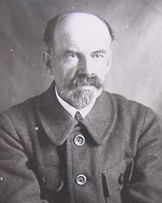
Vitaly Cheslavovich Dorogostaysky
(1879-1938)He was an outstanding zoologist, explorer of Baikal, Angara, Khubsugul and mountain lakes of Khamar-Daban, organizer of the Baikal Hydrobiological Station and Zoomomey of Irkutsk University. Vitaly Cheslavovich after the end of the Irkutsk Male gymnasium in 1898-1906. he studied at the Stroganov Art School and at the same time at Moscow University, where he specialized in ornithology under Professor M.A. Menzbier. After graduating from the University in 1906, he returned to Irkutsk, where he occupied the position of teacher of natural science in the women’s and men’s gymnasiums, and he took an active part in the activities of the Russian Geographical Society and the Irkutsk Magnetic and Meteorological Observatory. He was the participant of expeditions to Mongolia, Uryankhaysky region, to the Yablonovy and Stanovoy ridges in Eastern Siberia [17]. From 1910 to 1917 he lived in Moscow and worked at the Institute of Comparative Anatomy. In 1910 he participated in expeditions to equatorial Africa, in 1915 and 1916 – to the lake Baikal. In 1917 he was elected as a Professor of the Omsk Agricultural Institute, and during 1919-37 he headed the Department of Zoology of Vertebrates of the Irkutsk University. In the summer of 1937, Professor V.Ch. Dorogostaysky arrived in Almaty at the invitation of the leadership of KazSU, and got a job at the University as a Head of the Zoology Department at the Faculty of Biology. Unfortunately, his time at KazSU was very short – from July 15 to August 25, 1937 – right up to his arrest by the NKVD bodies. He managed to transfer to the Museum a collection brought by him that was collected mainly in the Irkutsk region, of which 116 carcasses of birds and mammals have survived to date [18]. Despite staying at the University for only 40 days, he managed to make at least three trips in the vicinity of Alma-Ata, including July 14 and 15 on Astashinsky pond and on August 7 to the river Kaskelen. The fund stores 13 birds and 2 rodents that were collected and made by him at that time
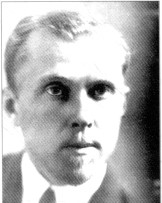
Viktor Alekseevich Selevin
(1905-1938)He was the famous Kazakhstani zoologist, who began his scientific activity in the Semipalatinsk Museum of Local Lore (fig. 28). In 1927-1932 he studied at Tomsk and Central Asian Universities. He participated in many zoological expeditions in the East, South-Eastern and Central Kazakhstan. The most famous was his complex research in the desert Betpak-Dala. Unfortunately, his unexpected death after a severe heart attack on November 4, 1938 interrupted his scientific activities, but Alma-Ata scientists V.S. Bazhanov and B.A. Beliaslyud described a new species of rodent, Selevinia betbakdalensis, based on his collections and separated it into an independent subfamily [9]. The collection of birds and mammals collected by V.A. Selevin from 1933 to 1938 during expeditions in the Karaganda region and Betpakdala, are stored in the funds of the Biological Museum, including typical specimens of Selevinia.
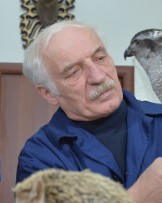
Boris Petrovich Zhuiko
А famous taxidermist, student and follower of E.F. Rodionov. He was born in 1954 in the city of Alma-Ata, in 1977 he graduated from the Faculty of Biology of the Kazakh State University named after S.M. Kirov. During his years of study, he specialized in ornithology and taxidermy, therefore, during distribution, he was left in the Biological Museum of the University. In a number of circumstances, in 1979, he moved to the Ornithology Laboratory of the Institute of Zoology, Academy of Sciences of the Kazakh SSR, and in December of the same year he was transferred to the Museum of Nature of the Academy of Sciences of the Kazakh SSR. A year later, he worked as a taxidermist of the Kazakh Zoo Plant, and since March 1981 he was an engineer in the Laboratory of Paleobiology at the Museum of Nature of the Academy of Sciences of the Kazakh SSR. In 1986, Boris Petrovich was invited to the position of the Head of the Taxidermy Restoration Workshop of the University Museum, where he works up to the present. For three decades of his work in the Museum, he has established himself as a highly qualified taxidermist. Thanks to his skill, the Museum was decorated with new expositions, stuffed animals and biological groups of animals, the collection of carcasses of vertebrates has increased many times, a number of his students received professional training for a rare taxidermist specialty.

Musabekov Kylyshbai Satimbekovich
Musabekov Kylyshbai Satimbekovich, chief specialist of the Biological Museum of the Kazakh National University named after al-Farabi, Ph.D. Honorary Doctor of Science, Professor of RAE, Honored Worker of Science and Education. He is the author of more than 120 scientific and popular works, including the “Kazakhstan” encyclopedia “Kazakhstan” (1998-2007) - 21, Methods for capturing a jackal in Central Asia and Kazakhstan (1988), the Red Book of Kazakhstan (2010) - 2, The animal World which the Red Bok of Southern Kazaksthan region (2014)" - 2, Monograph "Jackal in Kazakhstan "(Lamberd, 2014, Germany), author and head of the It includes the Kazakh-Russian and Russian-Kazakh Terminological Biological Dictionary groups (2014), etc.